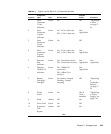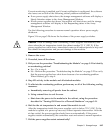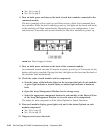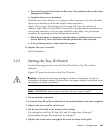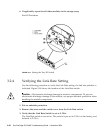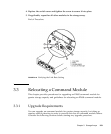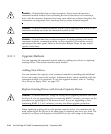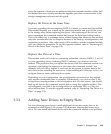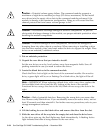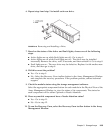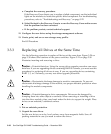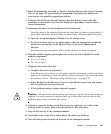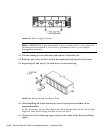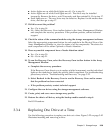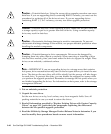
Chapter 3 Storage Arrays 3-33
array, the amount of time you can afford to keep the command module offline, and
the method that most closely matches the upgrade procedure recommended in the
storage management software and this guide.
Replace All Drives at the Same Time
If you are upgrading drives containing RAID 0 volumes, you must use this method.
This method requires you to back up the command module and turn off the power
to the storage array before replacing the drives. After replacing all the drives, you
must reconfigure the command module and restore the data from backup media.
This is the safest way to exchange drives without losing data. However, this method
may take considerable time to complete because of the backup, reconfiguration, and
restoration procedures. Also, other users will be unable to use the command module
until you finish the procedure. To use this upgrade method, refer to “Replacing All
Drives at the Same Time” on page 3-36.
Replace One Drive at a Time
This method works only on drives containing redundant volumes, RAID 1, 3, or 5. If
you are upgrading drives containing RAID 0 volumes, you must not use this
method. This procedure lets you replace the drives while the command module is in
operation, eliminating the necessity to shut down the command module. You
manually fail each drive, replace it, and wait for the system to restore data to the
new drive before installing the next drive. After installing all of the new drives, you
configure them to create additional drive space.
Depending on your configuration, the reconfiguration procedure for this method
may require considerable time to complete. Furthermore, you can lose data if the
storage array reconfiguration or drive restoration fails. For this reason, you should
back up all data on the command module before using this upgrade method. This
will safeguard your data if the reconfiguration or restoration fails, or if the new
drive malfunctions. To use this upgrade method, refer to “Replacing One Drive at a
Time” on page 3-39.
3.3.2 Adding New Drives to Empty Slots
Use the following procedure to install additional drives into empty slots in the
command module Figure 3-19 on page 3-35 illustrates inserting and removing a
drive. You can install additional drives while the command module is in operation.



